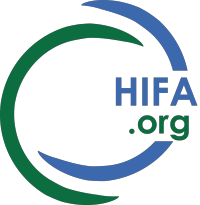This paper from Germany concludes: 'The population should be supported in their capability in appraising the received information and in assessing the trustworthiness of different information sources.' Citation, abstract and a comment from me below.
CITATION: Relation of corona-specific health literacy to use of and trust in information sources during the COVID-19 pandemic
Saskia Maria De Gani, Fabian Marc Pascal Berger, Elena Guggiari & Rebecca Jaks
BMC Public Health volume 22, Article number: 42 (2022)
https://bmcpublichealth.biomedcentral.com/articles/10.1186/s12889-021-12...
ABSTRACT
Background: COVID-19 has developed into a worldwide pandemic which was accompanied by an «infodemic» consisting of much false and misleading information. To cope with these new challenges, health literacy plays an essential role. The aim of this paper is to present the findings of a trend study in Switzerland on corona-specific health literacy, the use of and trust in information sources during the COVID-19 pandemic, and their relationships.
Methods: Three online surveys each with approximately 1′020 individuals living in the German-speaking part of Switzerland (age ≥ 18 years) were conducted at different timepoints during the COVID-19 pandemic, namely spring, fall and winter 2020. For the assessment of corona-specific health literacy, a specifically developed instrument (HLS-COVID-Q22) was used. Descriptive, bivariate, and multivariate data analyses have been conducted.
Results: In general, a majority of the Swiss-German population reported sufficient corona-specific health literacy levels which increased during the pandemic: 54.6% participants in spring, 62.4% in fall and 63.3% in winter 2020 had sufficient corona-specific health literacy. Greatest difficulties concerned the appraisal of health information on the coronavirus. The most used information sources were television (used by 73.3% in spring, 70% in fall and 72.3% in winter) and the internet (used by 64.1, 64.8 and 66.5%). Although health professionals, health authorities and the info-hotline were rarely mentioned as sources for information on the coronavirus, respondents had greatest trust in them. On the other hand, social media were considered as the least trustworthy information sources. Respondents generally reporting more trust in the various information sources, tended to have higher corona-specific health literacy levels.
Conclusions: Sufficient health literacy is an essential prerequisite for finding, understanding, appraising, and applying health recommendations, particularly in a situation where there is a rapid spread of a huge amount of information. The population should be supported in their capability in appraising the received information and in assessing the trustworthiness of different information sources.
COMMENT: Nobody would argue that health literacy is unimportant, but it remains unclear to what extent health literacy programmes can help people differentiate reliable from unreliable information as compared with provider-led approaches such as (1) signposting reliable information (as promoted by the Health on the Net Foundation and others), (2) promoting good practice among health information providers, and (3) regulation of social media.
Best wishes, Neil
Neil Pakenham-Walsh, HIFA Coordinator, neil@hifa.org www.hifa.org

